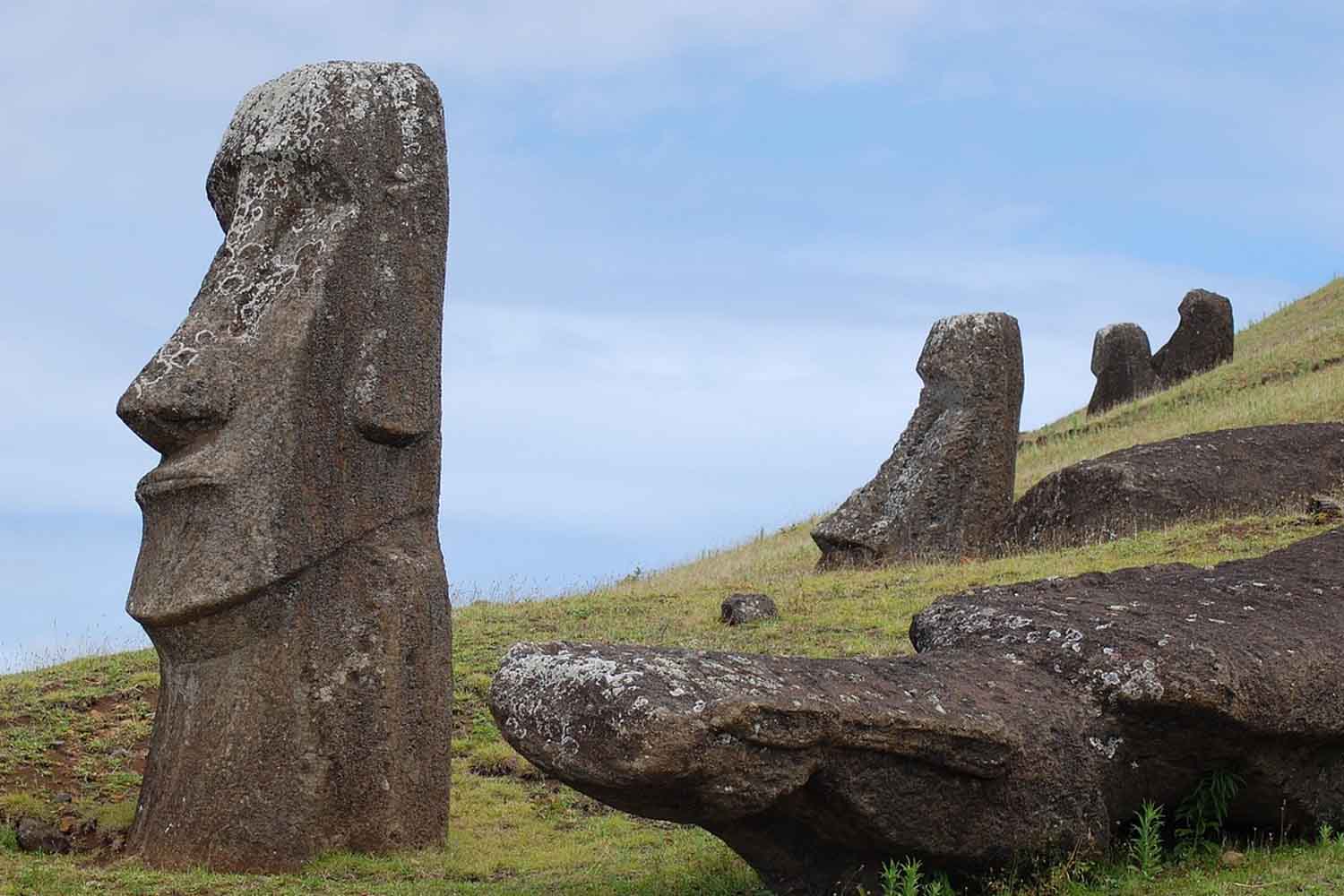Scholars demonstrate through field experiments and 3D modeling that the moai statues were transported in an upright position, without the use of rollers or sleds

For centuries, the mystery of how the ancient inhabitants of Rapa Nui—better known as Easter Island—transported the imposing moai statues has fascinated researchers and travelers from around the world. Today, thanks to new research conducted through physics, three-dimensional modeling, and practical field tests, scholars provide the strongest evidence ever recorded: the colossal moai were not dragged or rolled, but moved in an upright position with an oscillating movement similar to walking.
The new study, published in the Journal of Archaeological Science, is the result of joint work by anthropologist Carl Lipo from Binghamton University and colleague Terry Hunt from the University of Arizona. Analyzing nearly 1,000 moai statues, including 62 located along the island’s ancient roads, the researchers discovered that the statues have a unique shape, specifically designed to facilitate movement.
The statues found along the ancient pathways share distinctive features such as a wide D-shaped base and a forward-leaning torso. These characteristics allow the statue to rock from side to side, thus generating a controlled forward movement—a sort of artificial “walking” achieved through the use of ropes and human force.
The statues could move by walking, without deforestation or rollers
To verify this theory, the scholars created a full-scale replica of a moai statue, weighing 4.35 tons (9,590 lbs), reproducing exactly the original proportions. The experiment was surprising: using only ropes and a group of 18 people, they managed to move the statue 100 meters (328 feet) in 40 minutes. No rollers, no sleds, no damage to the ground: just a controlled and constant oscillating movement, in a zigzag pattern.
This practical demonstration refutes previous theories, according to which the statues would have been transported horizontally on logs, thus contributing to the island’s deforestation. On the contrary, the “walking” method proves more efficient, sustainable, and consistent with the limited resources available to the ancient inhabitants.
The oral legends of the Rapa Nui find confirmation in modern science
Another fascinating element emerging from the study concerns the correspondence between scientific evidence and the oral tradition of the Rapa Nui people. For centuries, in fact, elders have recounted that the statues “walked” to their ceremonial platforms, called ahu. Today, science confirms that these stories were based on refined technical and cultural knowledge.
Analysis of the spatial distribution of statues on the island revealed that more than half of the unfinished or damaged statues are located within a radius of two kilometers (1.2 miles) from the Rano Raraku quarry, the point of origin for most moai. This distribution follows an exponentially decreasing pattern, consistent with the hypothesis of transports interrupted by breakdowns or falls, rather than intentional placement.
The roads themselves, approximately 4.5 meters (15 feet) wide and concave in shape, appear to have been designed to favor the stabilization of statues during their movement. The presence of overlapping and parallel paths suggests that workers widened the routes as they proceeded toward the final destination.
This revolutionary study also addresses past criticisms related to terrain difficulty, rope resistance, and the real possibility of transporting such heavy objects over irregular surfaces. According to the researchers, none of these factors invalidates the walking hypothesis. On the contrary, everything indicates that the very shape of the statues evolved to adapt to this mode of transport: a method perfectly compatible with the natural resources and technical knowledge of the Rapa Nui.
The discovery also reinforces the idea that the Rapa Nui population did not cause an environmental collapse, as claimed by previous theories, but was able to manage its environment intelligently and sustainably through an integrated system of statues, roads, and social organization.
